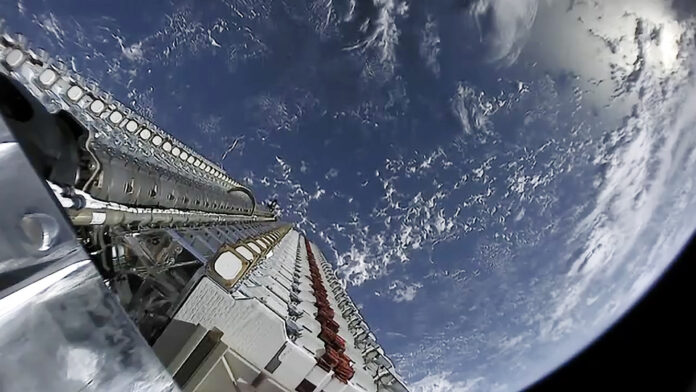
SpaceX launched another crew to the International Space Station early Saturday, an international mix that includes astronauts from the United States, Denmark and Japan and a cosmonaut from Russia that NASA hopes will showcase its global partnerships.
The company’s Falcon 9 rocket lifted off from the Kennedy Space Center at 3:27 a.m., lighting up the sky along Florida’s Space Coast. The mission, known as Crew-7, is being commanded by NASA astronaut Jasmin Moghbeli, a Marine Corps helicopter pilot and lieutenant colonel. She is joined by Russian cosmonaut Konstantin Borisov, European Space Agency astronaut Andreas Mogensen, who is from Denmark, and Satoshi Furukawa, a Japanese astronaut.
The flight was delayed a day after teams from NASA decided to take additional time to ensure that all systems on the Dragon spacecraft’s environmental control and life support systems were working properly.
Upon reaching orbit, Moghbeli congratulated mission control on a successful liftoff. “We may have four crew members on board from four different nations, Denmark, Japan, Russia and the USA, but we’re a united team with a common mission,” she said.
It was SpaceX’s seventh flight under contract for NASA carrying a full contingent of astronauts, further evidence that Elon Musk’s company, which has launched rockets at an unprecedented rate this year, has become the dominant engine of the space industry.
In addition to ferrying crews to and from the station, SpaceX also holds a contract from NASA to fly cargo and supplies there, and flies other missions for the Pentagon and the intelligence community. It also has flown private citizens to orbit and to the space station.
But the bulk of its flights in recent years have been to put up its constellation of Starlink satellites, which beam the internet to ground stations located in remote areas around the world.
The company is now launching its reusable rockets about once every four days. Last year, it launched 61 times, so far this year the number is approaching 60. In the first half of this year, SpaceX launched 1,411 spacecraft to orbit totaling nearly 1 million pounds, according to Bryce Space and Technology, a consulting firm. By contrast, China and all of its launch providers launched 119 spacecraft whose cargo totaled just under 125,000 pounds.
William Gerstenmaier, SpaceX’s vice president for build and flight reliability, said the Starlink missions driving the high flight rate help SpaceX understand the margins of the rocket’s capabilities. Without people on board, they run the engines at a higher thrust level, he said. “Then we fly that crew mission at reduced levels with more margin available for the hardware,” he said. “So I think that gives us another benefit of getting a chance to see this hardware operate in a more stressful environment.”
But despite the high cadence of launch, the company still has to remain vigilant, especially for human spaceflight missions, he said.
“It’s easy to think that this is easy,” Gerstenmaier told reporters before the flight. “This business is not easy. From the outside it may look like we’re flying a lot of flights, and they’re all trouble free. They are not all trouble free. They are not easy. Every time we fly, we learn something. We spend the time to go analyze it.”
Recently, SpaceX and NASA discovered problems with some of the valves in the Dragon spacecraft, officials said. Moisture mixing with the oxidizer caused corrosion along some of the valves. But teams from SpaceX and NASA studied the issue and NASA cleared the company for flight, Steve Stich, NASA’s commercial crew program manager, said.
“We’re in good shape for flying,” he said. “We wanted to understand it very thoroughly, so we spent the last month or so looking at data. SpaceX tested different valves all across the country.”
The problem was “somewhat similar” to corrosion that caused some of the valves on Boeing’s Starliner spacecraft to stick, Stich said, forcing the company to delay its first flight with astronauts in 2021.
Since then, Boeing, the other company NASA has contracted with to fly astronauts to the station, has discovered additional problems with its spacecraft. It now says its first human spaceflight mission won’t come until next year. SpaceX first launched a pair of NASA astronauts in a test flight for the space agency in 2020.
If all goes according to plan, SpaceX’s Dragon capsule will arrive at the space station by 8:50 a.m. Eastern time Sunday. The crew is scheduled to spend about six months on the orbiting laboratory conducting science experiments before returning to Earth aboard the same Dragon capsule they arrived in.
(c) 2023, The Washington Post · Christian Davenport










